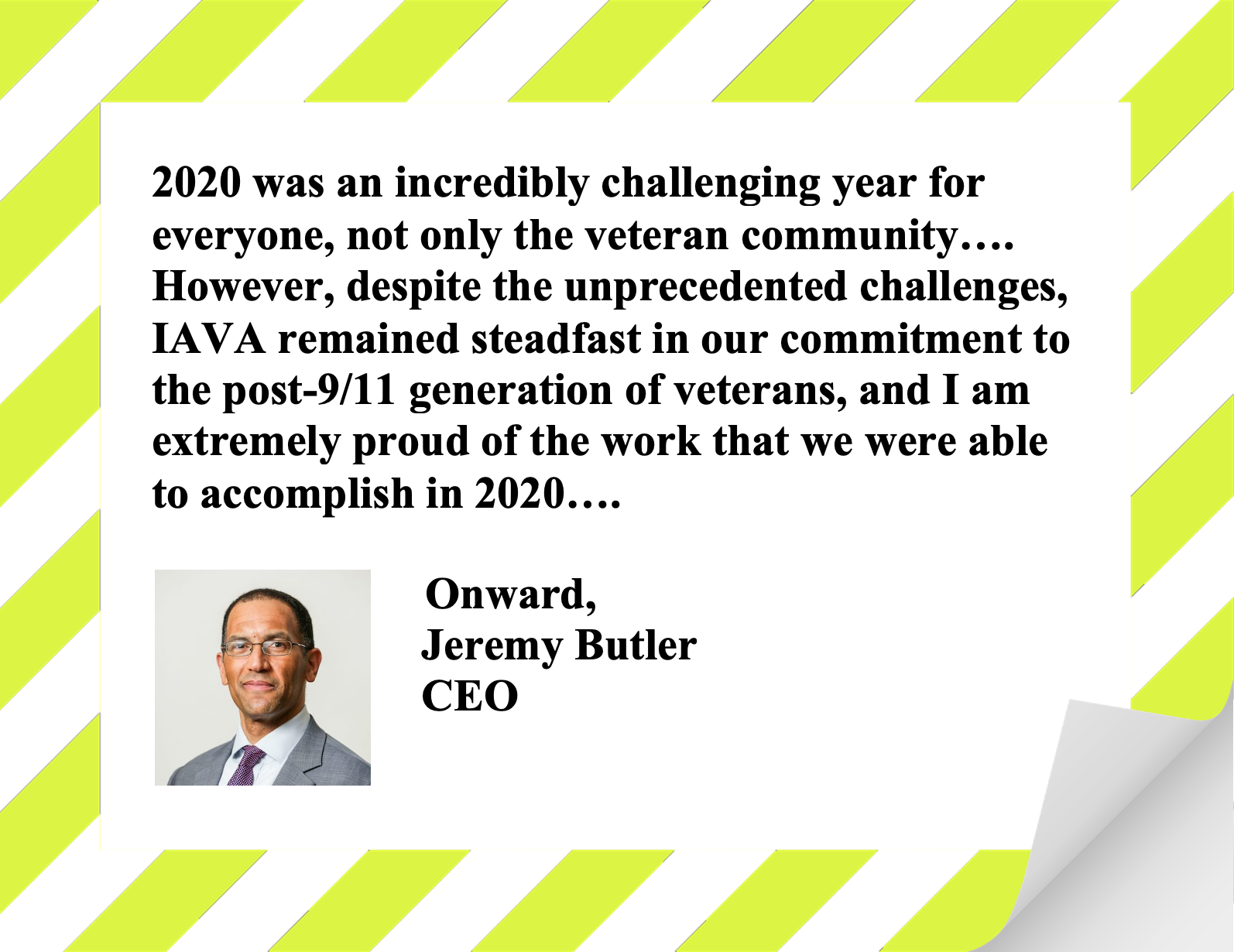IAVA's Policy Agenda for the 117th Congress
Combat Suicide among Troops and Veterans
Campaign to Combat Suicide among Troops and Veterans
For nearly a decade, IAVA and the veteran community have called for immediate action by our nation’s leaders to combat the crisis of 20 servicemembers and veterans dying every day from suicide. In the last two years, we made significant strides towards addressing this epidemic.
2020 was a groundbreaking year in mental health and suicide prevention. The passage of the IAVA-backed Commander John Scott Hannon Veterans Mental Health Care Improvement Act will result in critical reforms in how America combats the suicide crisis. Key provisions of this legislation will include the creation of a community grant program to help identify isolated veterans and provide mental health services, which is modeled after the extremely successful Supportive Services for Veteran Families (SSVF) program. These targeted programs are designed to identify the 14 veterans per day who die by suicide but are not currently participating in VA services and connect them to lifesaving resources. Additionally, this legislation will expand VA’s tele-health services at a time when veterans may be feeling more disconnected than ever before. These are critical improvements to VA care. But the work is not done.
According to the most recent VA data, the youngest cohort of veterans, post-9/11 veterans aged 18 to 34, have the highest rate of suicide. And while not always an indicator of suicide, mental health injuries continue to disproportionately impact the post-9/11 generation. In our latest member survey, a stunning 65% of IAVA members reported service-connected PTSD and over half reported anxiety (58%) or depression (56%). Meanwhile, the nation and VA struggle to keep up with the demand for mental health care and mental health care providers such as psychiatrists and psychologists, both of which are in the top 5 for VA staffing shortages.
Over the past few years, there has been much progress made in the realm of suicide prevention and mental health. The VA, DoD, and DHS’ plan for transitioning service members targets those in the post-9/11 generation at increased risk of suicide to engage with them before the moment of crisis. VA has leveraged tele-mental health care to expand its reach and predictive analytics to target the top 0.1% of veterans at risk for suicide. These reforms are critical to addressing the suicide crisis and IAVA remains dedicated to combating suicide.
IAVA's Approach
Engage the American Public in Combating Veteran Suicide
Engage the American Public in Combating Veteran Suicide
Just as with mental health, addressing the veteran suicide crisis is going to require every facet of society to join forces to tackle this epidemic. According to the latest VA reports, almost 14% of all suicide deaths in 2018 were veterans, while accounting for only 7% of the population.
In October 2018, IAVA held a veteran suicide awareness demonstration on the National Mall, planting 5,520 American flags to represent every veteran and military death by suicide by that point in the year. It was a powerful event, but what shocked us the most were the hundreds of people who asked us about the demonstration that had no idea about the veteran suicide crisis.
While a lot of great work is being done to combat veteran and military suicide, we must engage all Americans in this effort through the media, public awareness groups, public service announcements, and other means.
IAVA's Recommendations
- Inform the public about the veteran suicide crisis and the 988 crisis line
- Engage in a public service announcement campaign with other organizations specializing in combating suicide specifically marketing the 988 crisis line
- Ensure the public has access to quality materials and resources that explain and give the public tools to combat suicide by expanding the telehealth services provided by VA healthcare providers
- Ensure the media is accurately and respectfully covering suicides, per American Association of Suicidology’s recommendations
- Ensure clinicians have the training and resources necessary to engage veteran patients on firearm safety and suicide
- Partner with private organizations to combat suicide as a public health problem
- Distribute trigger locks at medical centers, sporting good/gun stores, and community centers
IAVA's Policy Priorities
Select a topic from the list below to learn about IAVA’s policy recommendations for the 117th Congress.

